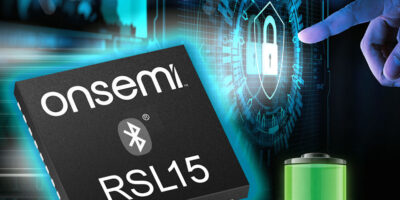Energy harvesting and biometric security technologies are integrated in the ST31N600, a secure microcontroller from STMicroelectronics. It is based on an Arm SecurCore processor and can be used in biometric system-on-card (BSoC) and dynamic card verification (dCVV) systems, says the company.
The microcontroller is launched at this week’s Trustech 2021 and is designed for security in contact and contactless payment cards, ID cards, and transport ticketing.
The ST31N600, based on ST’s 40nm eSTM technology, integrates circuitry for energy harvesting and additional connectivity used by biometric and dynamic card verification (dCVV) applications. It enables battery-free smartcards to provide enhanced user authentication in contactless and online transactions. Based on the latest-generation Arm SecurCore architecture for secure microcontrollers, the ST31N600 meets EMV ISO 7816, ISO 14443, and ISO 18092 standards for contact and contactless cards. Designers can use the microcontroller to securely connect various types of peripherals to introduce value-added card features.
At Trustech 2021, it will be used to demonstrate secure biometric payment based on STPay-Topaz-Bio and dCVV for safe online transactions.
STPay-Topaz-Bio is a payment system that combines the security of biometric cardholder authentication to the speed and convenience of contactless transactions. This BSoC is based on the ST31N600 with a low power STM32L4 microcontroller, both embedded in an EMV (Eurocard Mastercard Visa) module. The ST31N600 hosts payment applications, biometric-template matching and energy harvesting to power the system.
The ST31N600 is also suitable for ecommerce payment based on dCVV technology, which provides a dynamic code refresh on each EMV transaction without needing an external battery or clock timer.
ST is showing the BSoC based on Linxens’ EMV module and pre-laminated inlay combined with a FPC T-Shape 2 (T2) sensor module from Fingerprint Cards.
There is also the dCVV which has the Ellipse EVC All-in-One, the first EMV micromodule with an integrated screen to display a dynamic security code for eCommerce protection.
Samples of the ST31N600 are available now.







